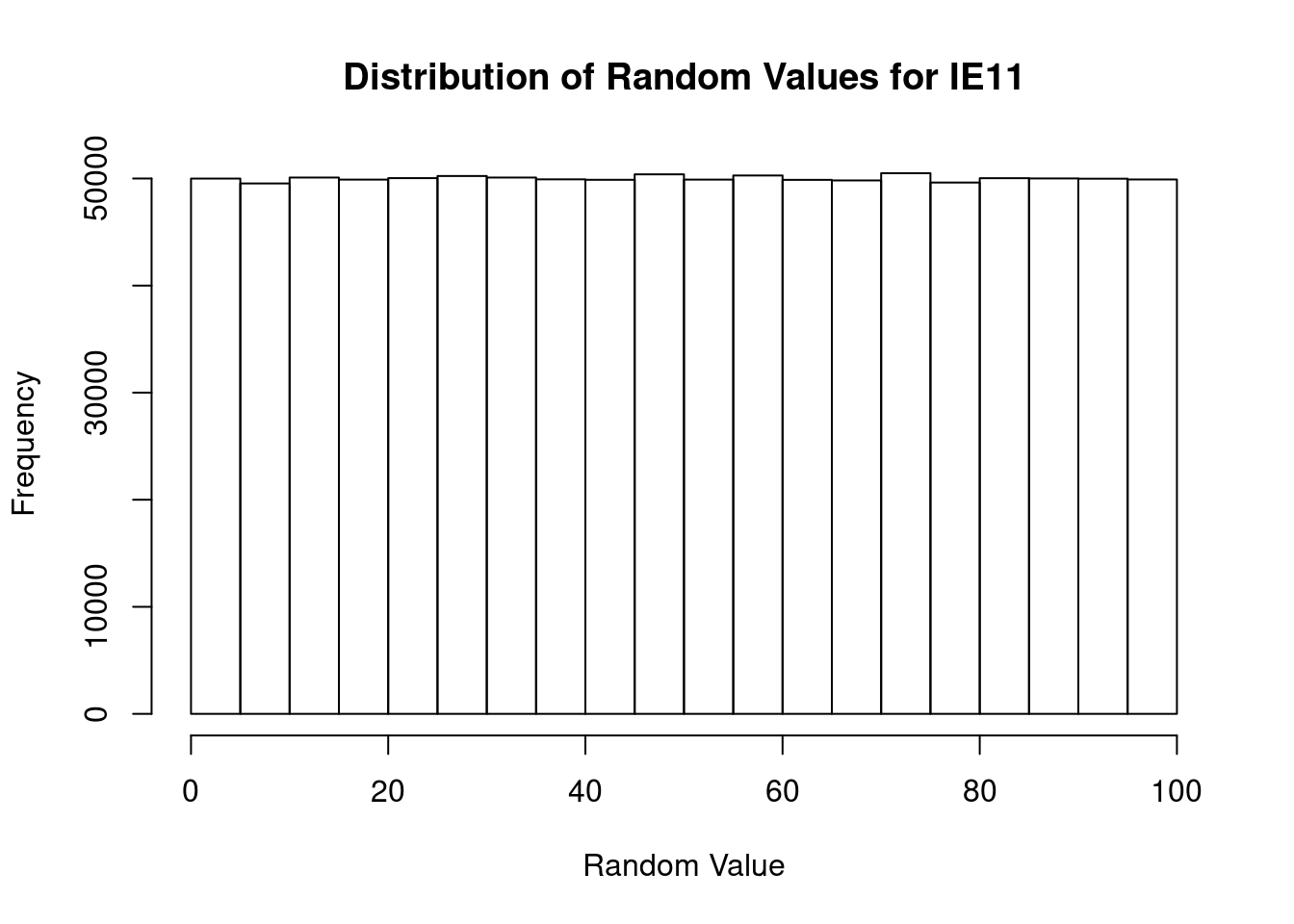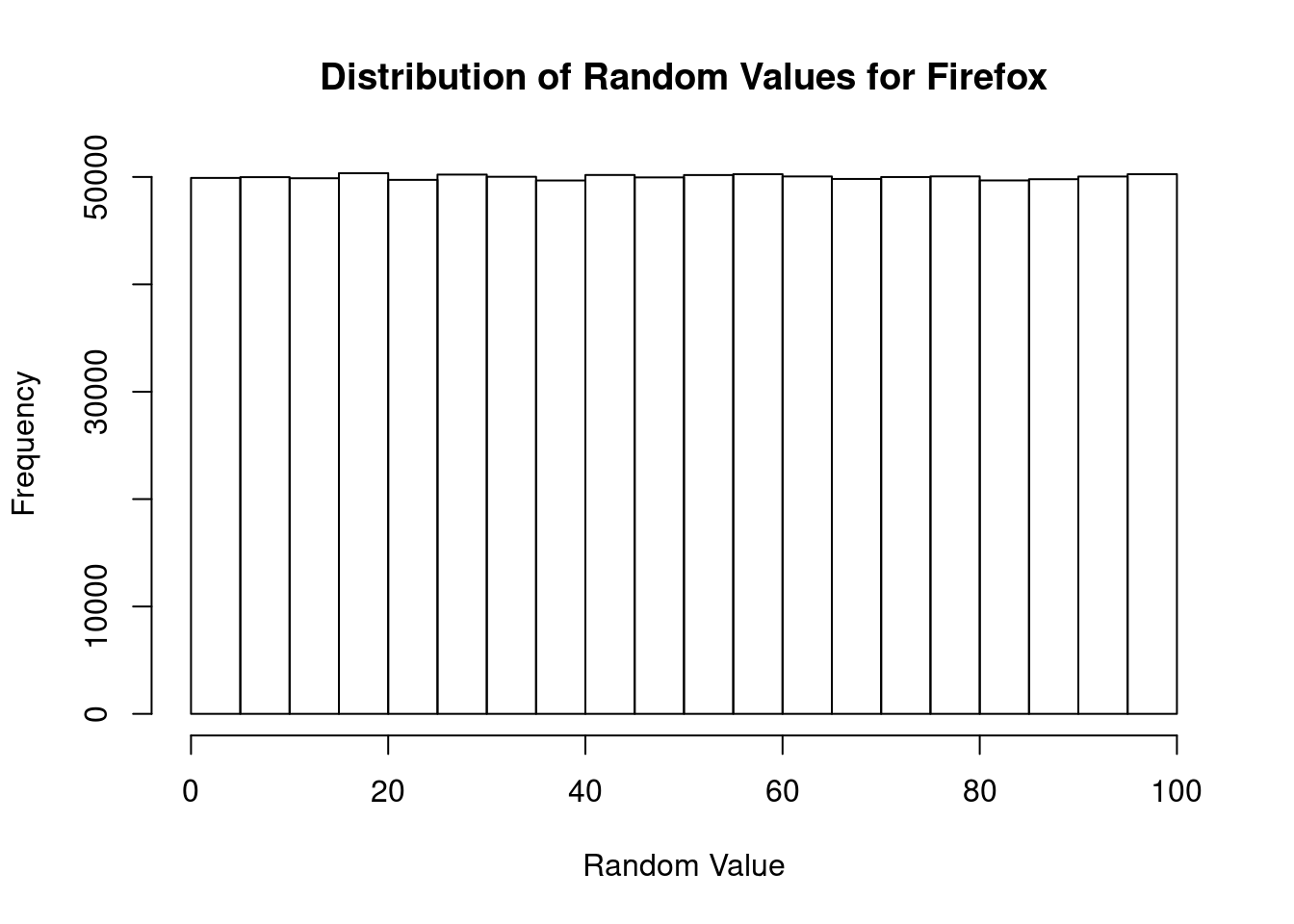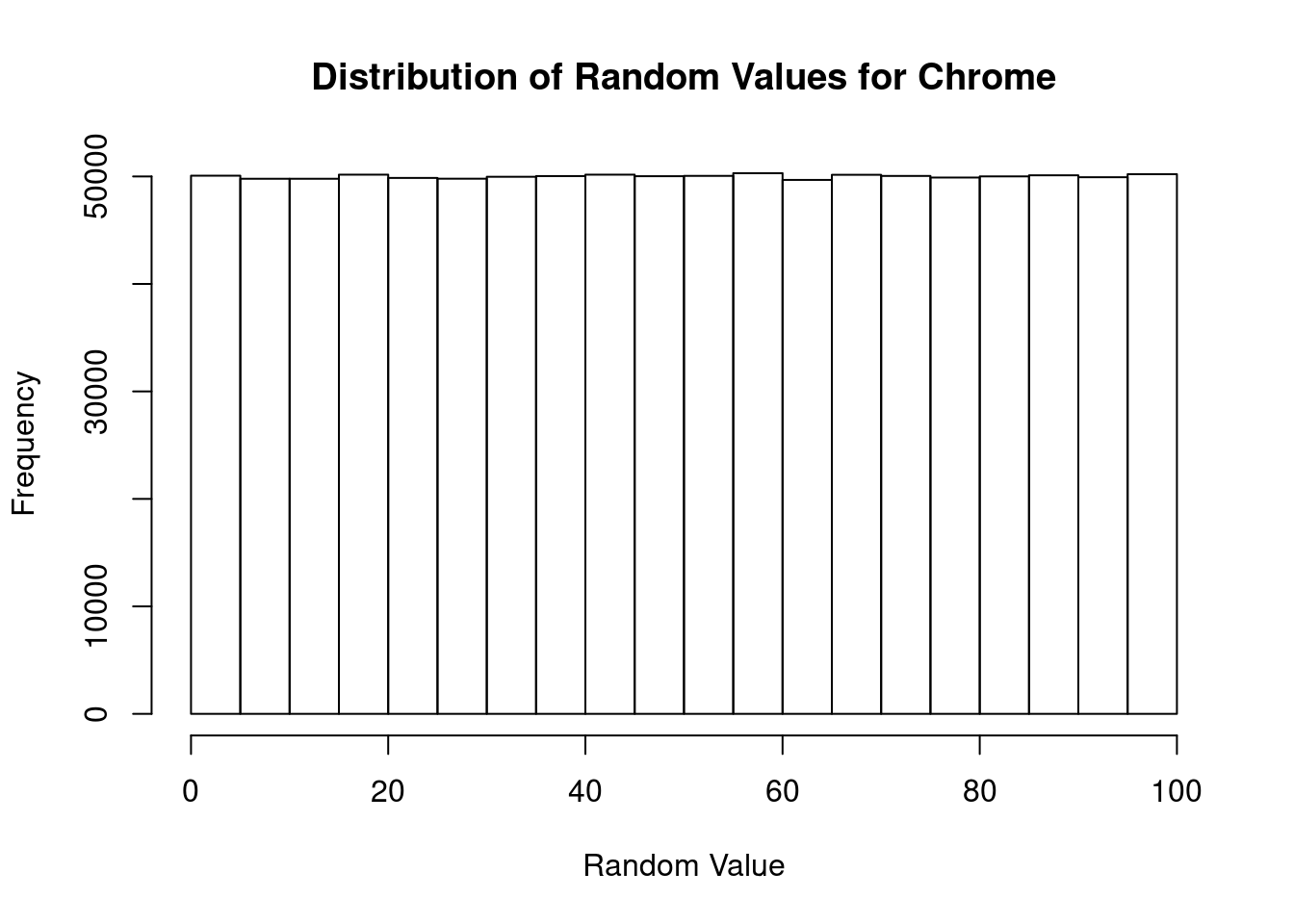Uniformity of Math.random()
Published on
Updated on
There are many cases where websites use random number generators to influence some sort of page behavior. One test to ensure the quality of a random number generator is to see if after many cases, the numbers produced follow a uniform distribution.
Today, I will compare Internet Explorer 11, Chrome, and Firefox on a Windows 7 machine and report my results.
Hypothesis
H0: The random numbers outputted follow the uniform distribution
HA: The random numbers outputted do not follow the uniform distribution
Gathering Data
I wrote a small website and obtained my data by getting the CSV outputted when I use IE11, Firefox, and Chrome.
The website works by producing a random number using Math.random() between 1 and 1000 inclusive and calls the function 1,000,000 times. Storing its results in a file
This website produces a file with all the numbers separated by a comma. We want these commas to be replaced by newlines. To do so, we can run a simple command in the terminal
grep -oE '[0-9]+' Random.csv > Random_corrected.csv
Do this with all three files and make sure to keep track of which is which.
Here are a copy of my files for Firefox, Chrome, and IE11
Check Conditions
Since we’re interested in if the random values occur uniformly, we need to perform a Chi-Square test for Goodness of Fit. With every test comes some assumptions
Counted Data Condition: The data can be converted from quantatative to count data.
Independence Assumption: One random value does not affect another.
Expected Cell Frequency Condition: The expected counts are going to be 10000
Since all of the conditions are met, we can use the Chi-square test of Goodness of Fit
Descriptive Statistics
For the rest of the article, we will use R for analysis. Looking at the histograms for the three browsers below. The random numbers all appear to occur uniformly
rm(list=ls())
chrome = read.csv("~/Chrome_corrected.csv", header = F)
firefox = read.csv("~/Firefox_corrected.csv", header = F)
ie11 = read.csv("~/IE11_corrected.csv", header = F)
hist(ie11$V1, main = "Distribution of Random Values for IE11", xlab = "Random Value")

hist(firefox$V1, main = "Distribution of Random Values for Firefox", xlab = "Random Value")

hist(chrome$V1, main = "Distribution of Random Values for Chrome", xlab = "Random Value")

Chi-Square Test
Before we run our test, we need to convert the quantatative data to count data by using the plyr package
#Transform to count data
library(plyr)
chrome_count = count(chrome)
firefox_count = count(firefox)
ie11_count = count(ie11)
Run the tests
# Chi-Square Test for Goodness-of-Fit
chrome_test = chisq.test(chrome_count$freq)
firefox_test = chisq.test(firefox_count$freq)
ie11_test = chisq.test(ie11_count$freq)
# Test results
chrome_test
As you can see in the test results below, we fail to reject the null hypothesis at a 5% significance level because all of the p-values are above 0.05.
##
## Chi-squared test for given probabilities
##
## data: chrome_count$freq
## X-squared = 101.67, df = 99, p-value = 0.4069
firefox_test
##
## Chi-squared test for given probabilities
##
## data: firefox_count$freq
## X-squared = 105.15, df = 99, p-value = 0.3172
ie11_test
##
## Chi-squared test for given probabilities
##
## data: ie11_count$freq
## X-squared = 78.285, df = 99, p-value = 0.9384
Conclusion
At a 5% significance level, we fail to obtain enough evidence to suggest that the distribution of random number is not uniform. This is a good thing since it shows us that our random number generators give all numbers an equal chance of being represented. We can use Math.random() with ease of mind.